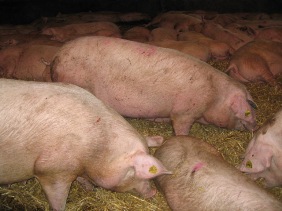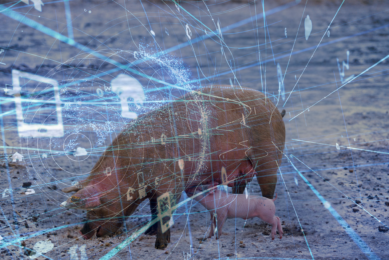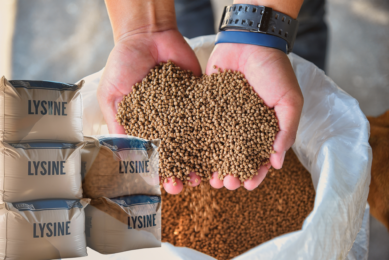New amino acid requirements for gestation sows

Genetics improve continuously, but nutritional requirements of the improved animal often do not follow suit. Canadian researchers reviewed the amino acid needs of modern sows, writes Greg Simpson in the latest edition of Pork News & Views of the Ontario Ministry of Agriculture.
In the last few years, researchers at the University of Alberta’s Swine Research and Technology Centre have been examining the amino acid requirements of gestation sows.
Their research has provided evidence that while great strides have been made in swine genetics over the last few years, the recommendations for daily amino acid intake during gestation needs revision.
Currently the NRC (1998) recommendations for nutrient and energy intake during gestation are constant. This assumes an equal distribution of nutrient demand during gestation.
Over- or under feeding
However, as sows progress through gestation we know the sow shifts from recovering body condition in early gestation to building foetal and mammary tissues in late gestation. In addition, practical experience on farm has shown that feed intake must be increased during late gestation to maintain performance and sow longevity.
Ignoring these physiological changes and feeding a single gestation ration leads to overfeeding in early gestation and underfeeding in late gestation.
Changes required
Based on their findings, the researchers have proposed changes to the amino acids requirements during gestation (see Table).
Tabel – Proposed new threonine and lysine requirements of gestating sows
Amino acid | Stage of gestation | Parity | ||
1 | 2 | 3 | ||
Lysine (g/day) | Early Late | 15.0 18.0 | 13.1 18.4 | 8.1 13.0 |
Threonine (g/day) | Early Late | N/A N/A | 7.0 13.6 | 5.0 12.3 |
Thr:Lys ratio | Early Late | N/A N/A | 53 74 | 62 95 |
These changes will impact how we feed gestation sows in several ways:
- It will be difficult to satisfy the sows’ nutrient requirements during gestation without phase feeding or using a top-dress.
- The ratio of amino acids, especially threonine to lysine, changes not only through gestation but as the sow ages. This will mean a different diet may be required for older parity sows.
- Lysine may not be the first limiting amino acid for older sows. Instead threonine may be first limiting, followed by tryptophan and lysine and branched chain amino acids third. This would dramatically alter the diet formulation for older sows.
This research, while promising to dramatically alter the way we feed gestation sows, has yet to be used on a commercial scale in a long term controlled feeding trial. These trials are expected to start soon.











